|
Immune System Facts : Parts Of The Immune System Defined Here!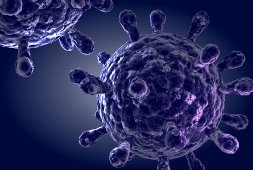
Adaptive Immune System (or Acquired Immunity): this is composed of highly specialized, systemic cells and processes that eliminate or prevent pathogenic activity. The innate immune system activates this second line of defense after a pathogen passes through the innate system. Immune system facts: This provides the ability to recognize and remember specific pathogens (to generate immunity), and to mount stronger attacks each time the pathogen is encountered. It is adaptive immunity because the body's immune system prepares itself for future challenges.
Allergen (causes Allergies): a substance that causes an allergic reaction after exposure via ingestion, inhalation, injection, or contact with skin. This is considered an autoimmune response, and so the immune system mistakes a harmless substance for a potentially dangerous one, and reacts with an aggressive response. In severe cases, this can be fatal.
Antibodies (or Immunoglobulins): proteins that are found in blood, and are used by the immune system to identify and neutralize foreign objects, such as bacteria and viruses. See Pictures of the Immune system.
Antigen: a substance that prompts the generation of antibodies and can cause an immune response (or antigen response).
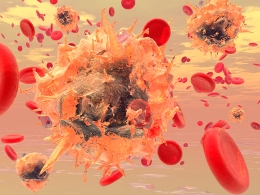
Antioxidant: a molecule that is capable of slowing or preventing the oxidation of other molecules. For a more detailed description , please click
here.
Autoimmunity (or Autoimmune Disorder or Disease): the failure of an organism to recognize its own constituent parts as self, which allows an immune response against its own cells and tissues. Immune system facts: Any disease that results from such an aberrant immune response is termed an autoimmune disease.
Bacteria: a large group of unicellular microorganisms, or microscopic living things. There are normally large numbers of bacteria on the skin and in the digestive tract. The vast majority of the bacteria in the body are rendered harmless by the protective effects of the immune system, and a few are beneficial, such as acidophilus. However, a few species of bacteria are pathogenic and cause infectious diseases. Immune system facts: The most common fatal bacterial diseases are respiratory infections. In developed countries, antibiotics are routinely used to treat bacterial infections. See Pictures of the Immune System.
B Cells: lymphocytes that play a large role in the immune response . One of the principal functions of B cells are to make antibodies against antigens, so they are an essential component of the adaptive immune system.
Cell: the structural and functional unit of all known living organisms. It is the smallest unit of an organism that is classified as living, and is often called the building brick of life.
Cell-Mediated Immunity: an immune response that involves the activation of macrophages, natural killer cells (NK), antigen-specific cytotoxic T-lymphocytes, and the release of various cytokines in response to an antigen.
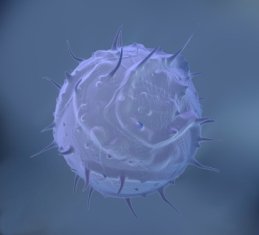
Cytokines: a category of signaling molecules that are used extensively in cellular communication. They are critical to the development and functioning of both the innate and adaptive immune response, although not limited to just the immune system. Immune System Facts: They are often secreted by immune cells that have encountered a pathogen, thereby activating and recruiting further immune cells to increase the system's response to the pathogen.
Defense Mechanism: In the immune system, the mechanism by which the antigen response is followed: detection, attack, capture and consumption.
Disease (or Medical Condition): an abnormal condition of an organism that impairs bodily functions, associated with specific symptoms and signs. It may be caused by external factors, such as invading organisms, or by internal dysfunctions, such as autoimmune diseases. Click
here
to learn more.
Glutathione (GSH): A protein in each of your cells that boost your immune system by promoting the up-regulation of T cells and the multiplication (or monoclonal expansion) of White Blood Cells in the body. Glutathione has a re-balancing affect on all components in the case on auto-immune disorder. It enhances the activity of the immune cells, and also functions as an antioxidant within them. Immune system facts: Healthy growth and activity of immune cells depend on the availability of GSH. It has been called "food for your immune system." For more information , click
here.
Humoral Immune Response (HIR): the aspect of immunity that is mediated by secreted antibodies (as opposed to cell-mediated immunity which involves T lymphocytes) produced in the B cells.
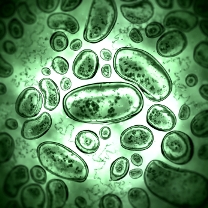
Immune System: a collection of biological processes within an organism that protects against disease by identifying and killing pathogens and tumour cells.
Immunity: a state of having sufficient biological defenses to avoid infection, disease, or other unwanted biological invasion.
Immunodeficiency (or Immune Deficiency or Disorder ): is a state in which the immune system's ability to fight infectious disease is compromised or entirely absent. Transplant patients take medications to suppress their immune system as an anti-rejection measure, as do some patients suffering from an over-active immune system. A person who has an immunodeficiency of any kind is said to be immunocompromised. Immune system facts: An immunocompromised person may be particularly vulnerable to opportunistic infections, in addition to normal infections that could affect healthy people. Immunology: a broad branch of biomedical science that covers the study of all aspects of the immune system in all organisms. It deals with, among other things, the physiological functioning of the immune system in states of both health and disease; malfunctions of the immune system in immunological disorders, and the physical, chemical and physiological characteristics of the components of the immune system.
Infection: the detrimental colonization of a host organism by a foreign species. The branch of medicine that focuses on infections and pathogens is infectious disease. Immune system facts: A secondary infection is an infection that occurs during or following treatment of another already existing primary infection.
Inflammation: the complex biological response of vascular tissues to harmful stimuli, such as pathogens, damaged cells, or irritants. Inflammation can be classified as either acute or chronic. Acute inflammation is the initial response of the body to harmful stimuli and is achieved by the increased movement of plasma and leukocytes from the blood into the injured tissues. Immune system facts: Prolonged inflammation, known as chronic inflammation, leads to a progressive shift in the type of cells which are present at the site of inflammation and is characterized by simultaneous destruction and healing of the tissue from the inflammatory process. Some manifestations of chronic inflammation are hardening of the arteries and rheumatoid arthritis.
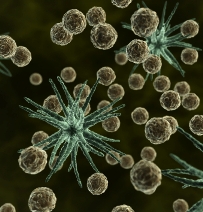
Innate Immune System: the cells and mechanisms that defend the host from infection by other organisms. The cells of the innate system recognize and respond to pathogens in a generic way, but unlike the adaptive immune system, it does not give long-lasting or protective immunity to the host. Innate immune systems provide immediate defense against infection.
Interferons: natural cell-signaling proteins produced by the cells of the immune system in response to challenges such as viruses, parasites and tumor cells. Immune system facts: Interferons belong to the large class of glycoproteins known as cytokines.
Leukocytes: see White Blood Cells.
Lymph Node: an organ consisting of many types of cells, found throughout the body, that acts as a filter or trap for foreign particles . They are part of they lymphatic system, and contain white blood cells. Thus they are important in the proper functioning of the immune system.
Lymphocyte: a type of white blood cell in the human immune system that play an important role in our body's defenses. Larger lymphocytes are called natural killer (NK) cells, and the smaller lymphocytes are the T cells and B cells. Immune System Facts: Lymphocytes are limited in their production by the availability of glutathione. See Pictures of the Immune System.
Natural Killer (NK) Cells: Natural Killer cell, these are part of the innate immune system and play a major role in defending the host from both tumors and virally infected cells. They are are activated in response to a family of cytokines called interferons.
Parasite: an organism that lives on or inside another organism to the detriment of the host. Examples of this in humans are tapeworms and lice, and fleas are parasitic to your pets.
Pathogen: an infectious agent, or germ, or biological agent that causes disease or illness to its host. The body contains many natural defenses against some of the common pathogens in the form of the human immune system and by some "helpful" bacteria present in the human body's normal flora. However, if the immune system or "good" bacteria is damaged in any way (such as by chemotherapy, human immunodeficiency virus (HIV), or antibiotics being taken to kill other pathogens), pathogenic bacteria that were being held at bay can proliferate and cause harm to the host. See Pictures of the Immune System.
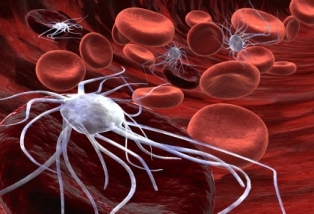
Phagocyte: the White Blood Cells that protect the body by ingesting harmful foreign particles, bacteria, and dead or dying cells. They are essential for fighting infections, and for subsequent immunity.
Phagocytosis: Engulfing and absorbing, effectively destroying the pathogen targeted. In the immune system it is a major mechanism used to remove pathogens and cell debris. Bacteria, dead tissue cells, and small mineral particles are all examples of objects that may succumb to this. Pictures of the Immune System : These are scattered throughout the page, and are depicting bacteria, viruses, red blood cells, white blood cells, and pathogens.
Plasma: the yellow liquid component of blood, in which the blood cells in whole blood would normally be suspended. It makes up about 55% of the total blood volume, and is 92% water by volume.
T Cells: these belong to a group of white blood cells known as lymphocytes, and play a central role in cell-mediated immunity. There are 6 known types of T cells: Helper , Cytotoxic , Memory , Regulatory, Natural Killer , and gamma delta T cells. Immune system facts: about 80% of our lymphocytes are T-cells. See Pictures of the Immune System.
Toxins: poisonous substances that are classified as either organic or inorganic that are capable of causing harm to you, either by contact , or by absorbing them through your food, air, or water. For more details about toxins, click
here.
Vaccine: a biological preparation that improves immunity to a particular disease A vaccine typically contains a small amount of an agent that resembles a microorganism. The agent stimulates the body's immune system to recognize the agent as foreign, destroy it, and "remember" it, so that the immune system can more easily recognize and destroy any of these microorganisms that it later encounters.
Virus: a sub-microscopic infectious agent that is unable to grow or reproduce outside a host cell. Viruses infect all types of cellular life. Viral infections in humans provoke an immune response, which can completely eliminate a virus. These immune responses can also be produced by vaccines that give lifelong immunity to a viral infection. Immune system facts: Antibiotics have no effect on viruses, but antiviral drugs have been developed to treat life-threatening and more minor infections. See Pictures of the Immune System.
White Blood Cells (or Leukocytes): cells of the immune system that defend body against both infectious disease and foreign materials. Also referred to as phagocytes since they engage in phagocytosis. There are 5 types of White Blood Cells, of WBC: Neutrophil, Eosinophil, Basophil, Lymphocyte, and Monocyte.
Several entries in the online encyclopedia "Wikipedia" "Glutathione- Your Key to Health" by Dr. Jimmy Gutman My heartfelt thanks and full acknowledgment go to both sources for this excellent source material for the page "Immune System Facts : Parts Of The Immune System".
Return to Top of Page.
|
